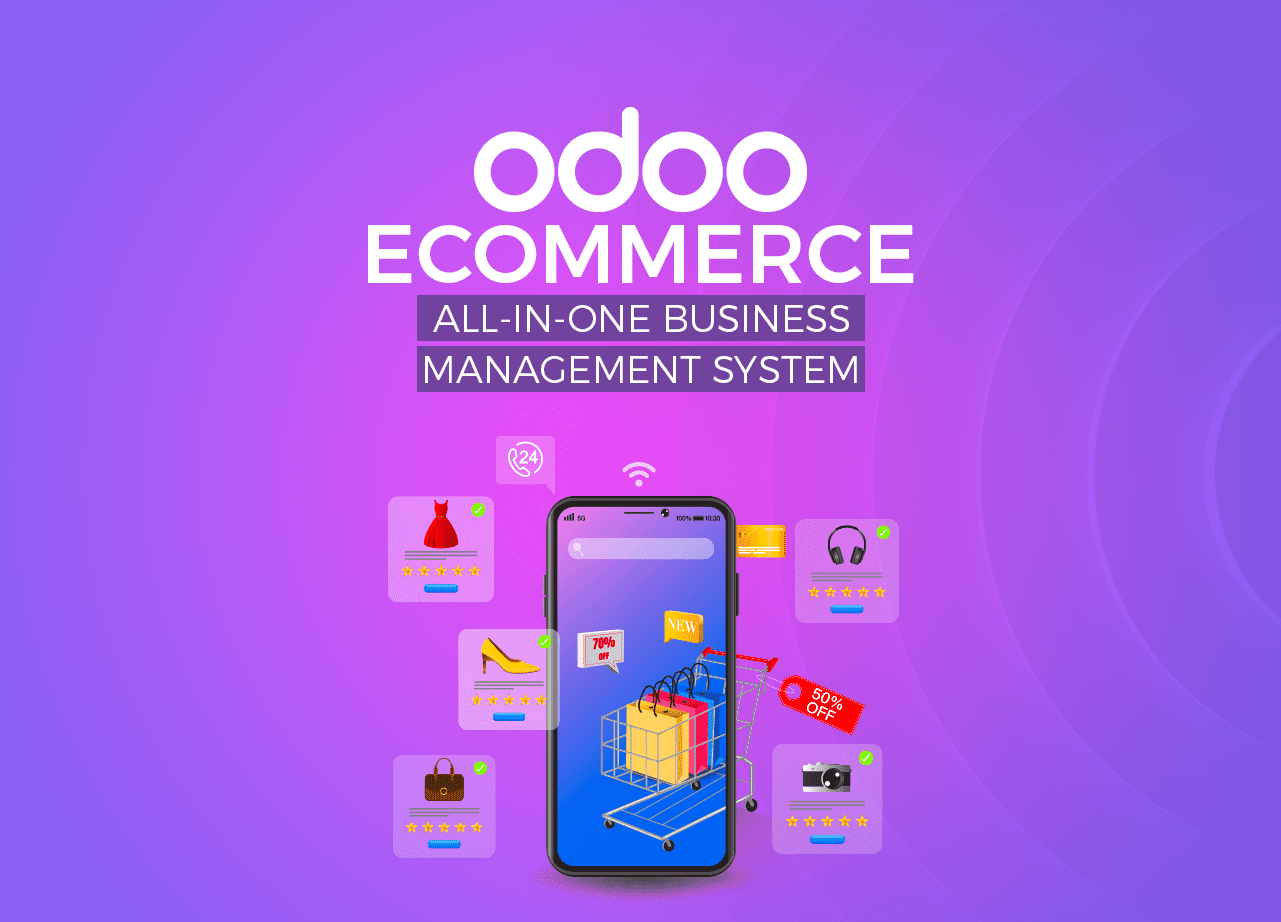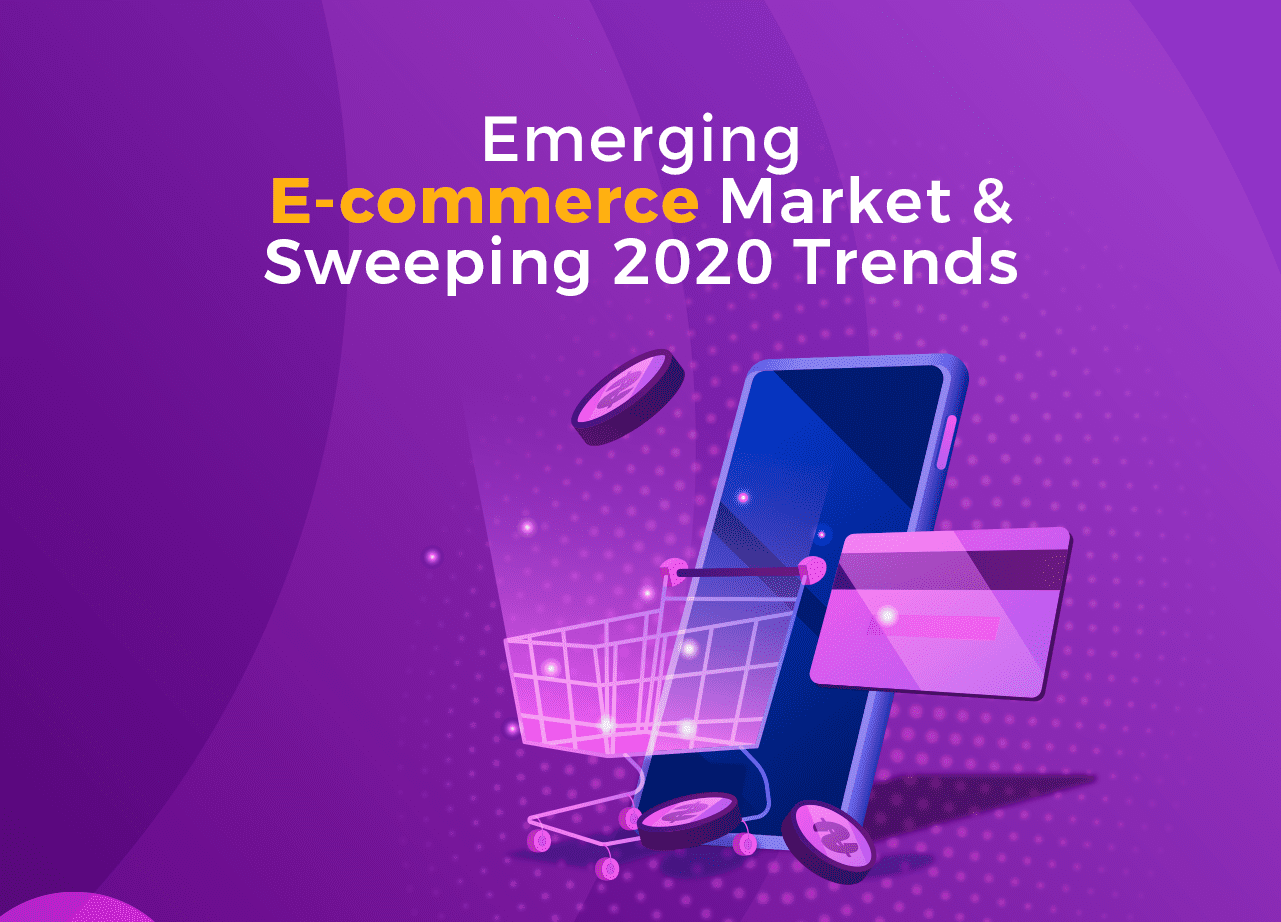As the world evolves, businesses have to evolve with it. The scale is shifting towards digitalization with 22% of all retail sales set to be digitalized by 2024.
The retail e-commerce sector is booming. With e-commerce sales reaching $4 trillion in 2020 alone! Yes, you heard it right!
This is just the gist of what the future has in store for the e-commerce industry. The Future of E-commerce development has picked up its pace for all the right reasons.
But why has online shopping been gaining more traction over the years? What’s happened to traditional shopping? Going to the malls and making a purchase once in a while.
Well, in this digital age online shopping has become more convenient than ever. With the constant innovations in technology, e-commerce stores have the capability to bring a whole new experience to the users.
Table of Contents
ToggleIn fact, here are some of the top reasons why consumers are preferring online shopping over conventional ways:
- Shopping in the comfort of their own homes
- Saves valuable time
- Wide variety of products
- Easy to compare products
- Easy to search specific products
- Refund or replacement was never easier
- Customer reviews
Having in-depth knowledge of e-commerce web development is crucial for succeeding in the global commerce race. And that’s why, in this article, we are going to speculate the best programming languages for e-commerce web development.
E-commerce websites are the new-age stores:
Your e-commerce website is the face of your company. The first impression matters. That’s why it’s essential to play your cards right from the start and provide your customers with a remarkable user experience that makes them stay and take the desired actions.
Some qualities that can make consumers gravitate toward your website are:
- Stable and fast loading times
- Seamless navigation
- Attractive aesthetics
- Responsive web design
- Responsive customer support
- Consistent and secure payment methods
- Simple & crisp descriptions and high-quality images
- SEO optimized
- Compatible with multiple devices (mobiles, computers, tablets)
Small steps for a business, a giant leap in profits:
An e-commerce website should be carefully planned out to achieve its true potential. So before diving into the topic of programming languages, let’s discuss the steps to increase consumer traffic.
- Identify your product: This is the first and the most obvious step towards building an e-commerce company. You must decide the product or products you want your company to be associated with and understand its market accordingly.
- Understand your audience: A business is nothing without its consumers. Identifying your potential customers is vital for your e-commerce development. Your web design, interface, colour scheme, images, information, and every aspect of your web page should cater to your targeted audience.
- Originality is key: The name of your company can make or break your e-commerce operation. It is the first thing your consumers notice when they visit your website. Take your time, and be original, and witty while you decide on a name for your company. Brand names like Google, Yahoo, Lego, and Asus have proven to be quite lucrative in the past.
- Domain name: After you have decided on the domain name of your website, purchase or register the domain as soon as possible. It’s wise to stay a step ahead, as the internet is a very unpredictable place.
- Branding: Strategize your marketing techniques. Building an e-commerce website gives you the power to control the story and the image of your brand. Branding is what makes your company stand out among countless distractions on the internet. It is the only way to truly connect with your consumers and create a consistent retail experience.
Programming languages and platforms:
You’re new to the world of e-commerce, and you’re looking to start a small-scale online store without the hassle of coding. You can use numerous content management systems (CMS) that can help you in creating a terrific online presence for your company. While there are many, WordPress, Shopify, Magneto, and WooCommerce power the majority of the eCommerce market.
With a few tutorials and guides, you can create your own website using these content management systems.
However, if you need to meet all your business needs successfully, hiring an e-commerce developer becomes necessary.
Because let’s face it, a spectacular, people-pleasing & revenue-generating online shop is what you would ultimately want. And hiring e-commerce developers with years of proven experience using the latest technology for e-commerce development is the answer to that problem.
But you need to choose the best programming languages that can adhere to your business needs. Every programming language is unique and has its advantages and disadvantages. And selecting the right one for your online shop can be pivotal to your business success.
Top 7 programming languages for E-commerce Development:
Java:
Java is one of the most popular and relatively simpler programming languages for building e-commerce websites. It is quite similar to C and C++ and it has some unique features.

Java is object-oriented, as well as most reliable among other programming languages. Its versatility makes it compatible with multiple platforms and browsers.
The main drawback to Java is that the programmer gets no right over garbage collection, and that’s why it needs a lot of memory to run. This results in expensive hardware requirements and a relatively slower runtime.
JavaScript:
JavaScript is used almost everywhere on the internet. It runs rapidly on the client-side unless outside resources are required. It has numerous applications as developers can insert small JavaScript programs into existing web pages, because it works well with other languages. One of the biggest reasons for its popularity is the ability to work on most modern web browsers.
The only downside to JavaScript is due to some of its security implementations. The code is executed on the user side, and therefore people can exploit bugs and overlook mistakes. JavaScript can’t be used to code across different browsers, as there are minimal differences in interpretations by different browsers.
PHP:
PHP is one of the developers’ favorite programming languages for creating e-commerce websites. It is responsible for the creation of Magento, one of the most popular content management systems. It has the ability to incorporate both functional and object-oriented formats. PHP is backed up by a large community of developers who maintain and regulate the extension libraries, and also detect and eradicate bugs promptly. It is fairly easy to create website scripts with this language.

Since PHP is open-source, everyone can have access to the source code of the website, source code, which makes it vulnerable to cyber-attacks.
Another thing to keep in mind is that if you’re looking to create an e-commerce website with complex functionalities and scalable features, PHP will not be the ideal language to go with.
Python:
Python yields the best results when using for e-commerce development. It is widely used around the globe and is one of the most efficient programming languages for e-commerce purposes. It has an extensive library that makes a developer’s life quite easy. Moreover, it helps the developers to create elaborate websites in minimal time.
Python codes can be integrated with other languages, and it is portable across multiple platforms. It is not at all arduous to read a Python code, unlike other languages, as its language is quite simple and straightforward.
However, if you’re looking to create an e-commerce mobile app, keep in mind that Python can only be used to create web development. Also, it needs a lot of test runs because the errors don’t show themselves till the application is run.
Ruby on Rails (RoR):
RoR may not be the first choice for developers, but if you’re looking to quickly launch your e-commerce site, then RoR can be the ideal choice. Ruby on Rails can work three times faster with its Mode-View-Controller (MVC). This divides the process into three subparts, which makes the process all the more seamless. Business owners tend to incline towards this language because it saves time while increasing profits. RoR also has an extensive library maintained by a large community, and in this library, there are many “gems” (codes) that are used as solutions to various problems by developers to further simplify the process.
Additionally, RoR has many features that focus on security, and many “gems” can be used to eradicate security breaches.
Ruby on Rails is not supported on all browsers, and its performance is quite slow compared to the other object-oriented programming languages.
HTML:
HTML is a globally used language that is supported by every browser. This language is used to easily alter the appearance of images, texts, layouts, and much more. It is free to use and does not require any additional software.

HTML is not viable for creating complex web pages. It is mostly used for static and straightforward work. Security features of this language are not reliable
C++:
C++ is adopted by a large number of developers because of its flexibility and scalability. It is an object-oriented language. The programmer can have complete control over memory management. A C++ program can be run across different operating systems and interfaces.
Although, Python is preferred in most cases since it is more developer-friendly than C++. C++ is not only a very complex language to get grasp of, but requires a lot of time to efficiently learn it.
Features to look for in a programming language:
Now that you’ve seen the different programming languages, you must be wondering which language is best for e-commerce development for your business?
You can use these factors to rate the functionality of the aforementioned languages.
- Simplicity: The framework of a programming language should be easy to understand and developer-friendly.
- Security: Utmost security implementations must be taken to ensure that the information and data of the users are secure. A secure site will help improve the company’s credibility and trust factor among buyers.
- Brevity: A high-level programming language requires fewer codes to finish a program. Such a language decreases code length, enables developers to find bugs easily, and boosts productivity.
- Efficiency: It should have proper garbage and memory management to run at a smooth and rapid pace.
- Versatility: A high-level programming language can be run across different browsers and operating systems.
- Portability: It should be possible to easily transfer the program after being developed to different computers.
- Orthogonality: Change in one aspect of the program shouldn’t affect other aspects of the program. This provides the developer freedom to make changes with ease. And thus enable to roll out updates quickly.
In recent years, online presence has become an absolute necessity. After reading this article, we’re sure you feel the same way. A well-maintained website can work wonders for a company’s conversion rates. It is not just an opportunity to sell, but also an opportunity to increase your brand’s presence and reach potential customers.
Long story short, a beautiful and responsive web design that provides customers with a seamless experience across all devices and enables them to find what they are looking for quickly are the cornerstones to success. Consumers always gravitate more toward such websites.
So don’t sit back and wait, get in touch and let us guide your company through the digital world. We are the one-stop destination for all your e-commerce solutions.
Here at Communication Crafts, as the leading and trusted eCommerce development company, we flaunt more than 17+ years of experience and an ever-growing group of web, mobile, design, branding, marketing, and eCommerce development experts.
We welcome you to exploit our expertise!
Looking for a team of best remote developers?
You’re in the right place!
 Blog Communication Crafts
Blog Communication Crafts





